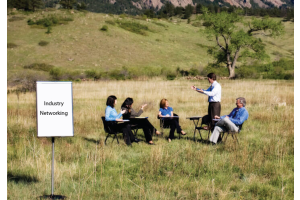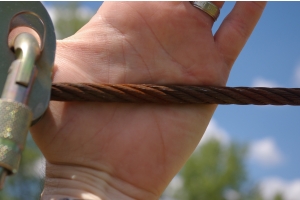challenge course
-
May 08, 2023
Networking is the process of building relationships with other people in your industry. It can be done in a variety of ways, such as attending industry events, joining professional organizations, and connecting with people online.
There are many benefits to networking. It can help you to:- Learn about new trends and developments in your industry.
- Stay up-to-date on safety regulations.
- Find new clients and partners.
- Hire qualified employees.
- Build your reputation and credibility.
Building Partnerships
Building partnerships is the process of forming mutually beneficial relationships with other businesses or organizations. Partnerships can be formed for a variety of reasons, such as:- To share resources.
- To expand your reach.
- To gain access to new markets.
- To reduce costs.
- To improve your products or services.
There are many -
May 01, 2023
The most important Key Perfomance Indicators or KPIs for the challenge course industry are:
- * **Safety:** The most important KPI for any challenge course is safety. This includes both the safety of participants and staff. Challenge courses should have a comprehensive safety plan in place and should regularly inspect their equipment to ensure that it is in good working order.
- * **Customer satisfaction:** Challenge courses should also track customer satisfaction. This can be done through surveys, interviews, or other methods. Customer satisfaction is important for a number of reasons, including attracting new customers and retaining existing customers.
- * **Revenue:** Challenge courses should also track revenue. This can be done by tracking ticket sales, rental fees, and other sources of revenue. Revenue is important for a number of reasons, including covering costs, making a profit, and investing in the business.
-
February 06, 2023
**What to Include in a Resume for a Challenge Course or Zipline Industry Job**
The challenge course and zipline industry is a growing and exciting field. If you're looking for a job in this industry, it's important to have a strong resume that highlights your skills and experience.
Here are some tips for creating a winning resume for a challenge course or zipline industry job:
* **Highlight your experience.** If you have any experience working in the challenge course or zipline industry, be sure to highlight it on your resume. This could include experience as an instructor, guide, or builder.
* **Be familiar with trade associations.** There are a number of trade associations that represent the challenge course and zipline industry. Familiarizing yourself with these associations and their work can show potential employers that you're serious about the industry. Some of the most well-known trade associations -
February 14, 2020
Belay devices are essential pieces of equipment for rock climbers, ropes course staff, zip line guides, rappellers, and others who work or recreate in high places. They are used to control the rope and prevent falls while climbing or ascending. There are many different types of belay devices available, each with its own advantages and disadvantages.
- Tubular belay devices are the most common type of belay device. They are simple to use and can be used for a variety of applications. Tubular belay devices work by creating friction on the rope as it passes through the device. This friction helps to control the rope and prevent falls.
- Assisted braking belay devices are a type of belay device that helps to reduce the risk of a fall. Assisted braking devices have a mechanism that automatically locks the rope in place if a fall occurs. This can help to prevent serious injury or death.
- Figure-8 descenders are a type
-
March 07, 2016
When it comes to ropes, there are two main types: dynamic and static. Dynamic ropes are designed to stretch, while static ropes are not. This difference in elasticity is what makes dynamic ropes ideal for climbing and challenge courses, while static ropes are better suited for other applications, such as rigging and securing loads.
Dynamic Ropes
Dynamic ropes are made from a variety of materials, including nylon, polyester, and Dyneema. They are designed to stretch when a load is applied, such as when a climber falls. This stretching absorbs the force of the fall, which helps to protect the climber from injury. Dynamic ropes are also more abrasion-resistant than static ropes, which makes them ideal for climbing on rough surfaces.
Static Ropes
Static ropes are not designed to stretch. They are made from materials that are strong and durable, such as nylon and polyester. Static ropes are ideal for applications where
-
February 27, 2016
Auto belay devices are a new safety innovation that is quickly becoming the standard for challenge courses and ropes courses. Auto belay devices use a variety of sensors to monitor the user's safety and automatically shut off the belay system if there is a fall. This provides an added layer of safety for participants, and it can help to reduce the risk of serious injuries.
History of Auto Belay Devices
The first auto belay devices were developed in the early 2000s. These early devices were bulky and expensive, and they were not widely adopted by the challenge course and ropes course industry. However, in recent years, there has been a significant improvement in the technology and design of auto belay devices. As a result, they are now more affordable, more compact, and easier to use. As a result, they are now being adopted by more and more challenge courses and ropes courses.
How Auto Belay Devices Work
Auto belay








